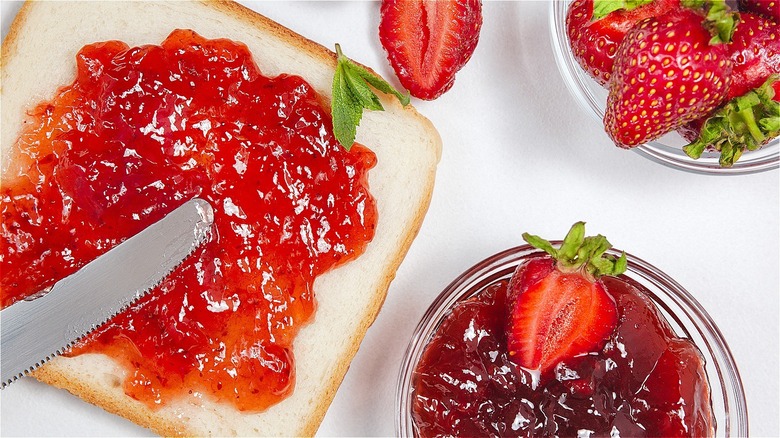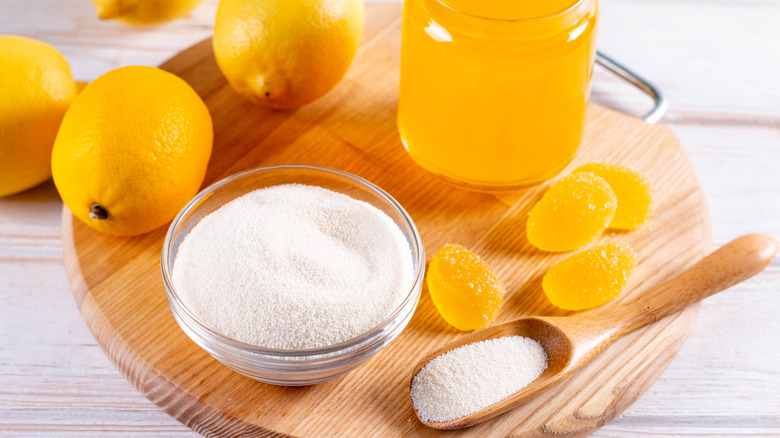The Ingredient Mistake You Need To Avoid For The Best Homemade Jam
There's nothing quite like a batch of homemade jam. The smell of the fresh, bubbling fruit can create a cozy kitchen environment as you add your ingredients and finally place your warm creation into jars ready for anyone to enjoy. Whether you prefer raspberries, strawberries, or blueberries, or even coming up with your own creations, making jam from the comfort of your own kitchen can be rewarding and incredibly easy. Plus, there is the added bonus of saving the money you would otherwise spend on commercially made jams and having a fun project that friends and family can spend time doing together.
With plenty of recipes out there — and if you're lucky, even some family secrets passed down the family tree — there are some general rules to follow to make sure your spreadable batch is a success. For instance, you should check your berries for bruises and mold, then wash them with great care, but don't leave them in the water, so they won't take on too much liquid for the boiling phase. That way you are sure not to rinse away all of the healthy aspects of the fruit and be left with a mushy mess, according to the University of Minnesota. However, there is also another ingredient mistake that could make or break your next batch of homemade jams, which you don't want to fall for.
Don't be afraid of commercial pectin
When making your own jam, it's crucial to follow the recipe to the letter. This includes the most important steps with regard to adding sugar and pectin. Much like gelatin or cornstarch, pectin is a starch that helps to bond your jam together so that it creates a more jelly-like substance as opposed to a liquid mess. However, unlike gelatin which is derived from animals, and cornstarch which comes from the vegetable, pectin can be found in fruits like apples, citruses like lemons and oranges, cherries, and blackberries, as per MasterClass.
Strawberries are notoriously low in pectin, so you absolutely cannot skip out on this crucial binding agent during the making of your own jam. Some jammers might want to lower the sugar and pectin levels because they worry about the added sweetness and may scoff at the thought of store-bought products. But be assured, passing on the pectin is a mistake you don't want to make. Without this gelling agent, it'll take longer to cook and for your jam to jelly which leaves you with a drab-colored batch. The amount of pectin you use can also depend on the fruit you are using. If it's naturally low-pectin-producing fruit then you require more powder or citrus juice in the cooking process to help it along. So for your next jam session, be sure to find the exact recipe for the fruit you're using, and don't be scared of the power of pectin.

